Hemianthus cube: description and content in the aquarium

An aquarium without vegetation is not common, which is not surprising, since representatives of the flora not only decorate the mini-reservoir, but also maintain the biological balance in it. Currently, aquarium plants are presented in a wide variety. A small algae called hemianus cube, which is often chosen by aquarists, looks very beautiful and unusual.
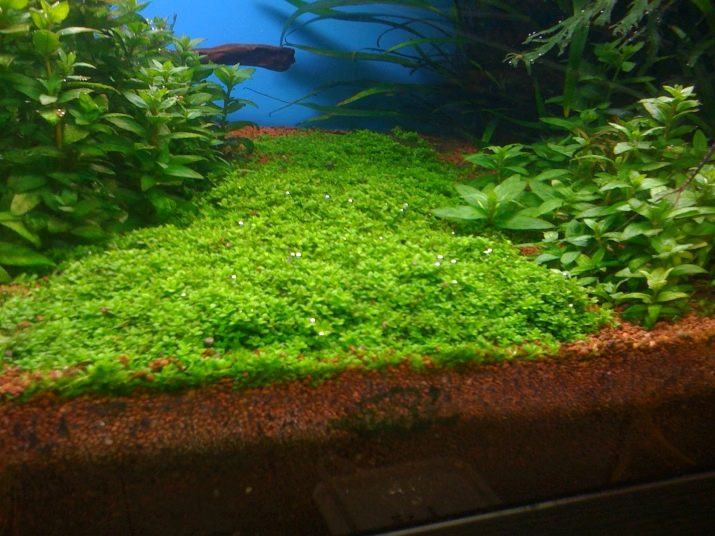
Description
In the natural environment, Hemianthus callitrichoides cuba can be found in the waters of Cuba and the Caribbean. The plant belongs to the Norichnik family. It has opposite solid oval foliage up to 2 millimeters in diameter. The leaflets have no stipules. The tops of the leaf plate are of a rich green color, the lower ones are slightly lighter. The intensity of the light gives the plant an emerald hue.
The miniature bush is characterized by a straight and thin stem, as well as the fragility of the root system, which is no more than 5 centimeters long. Hemianthus cube grows in colonies, in nature it can form a herbaceous cap with a height of 10 centimeters.
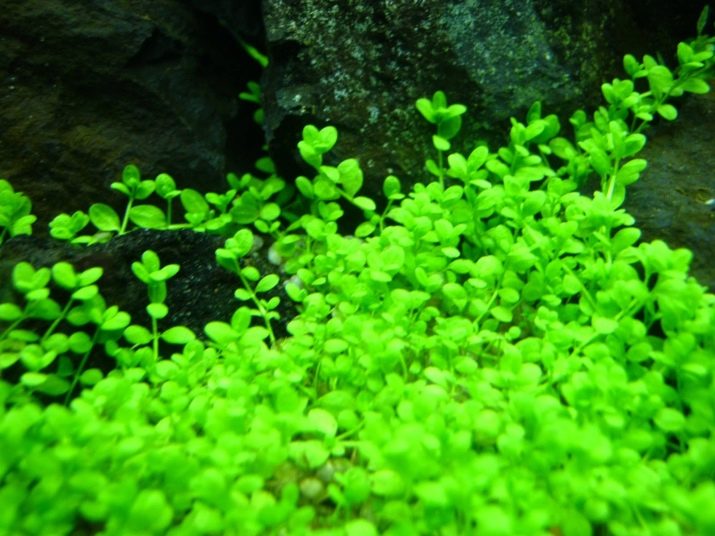
In an artificial ecosystem, the aquarium plant grows slowly. With proper care, it forms a green mat in 3 months.
At the end of the day, you can see that air bubbles form on the glossy leaves, which look mesmerizing.
Hemianthus is able to beautifully decorate an aquarium bottom with any area. If there are irregularities and slides in the ecosystem, the cube is able to neatly decorate them.This aquarium plant is an ideal option that combines an attractive appearance and responsiveness when properly cared for.
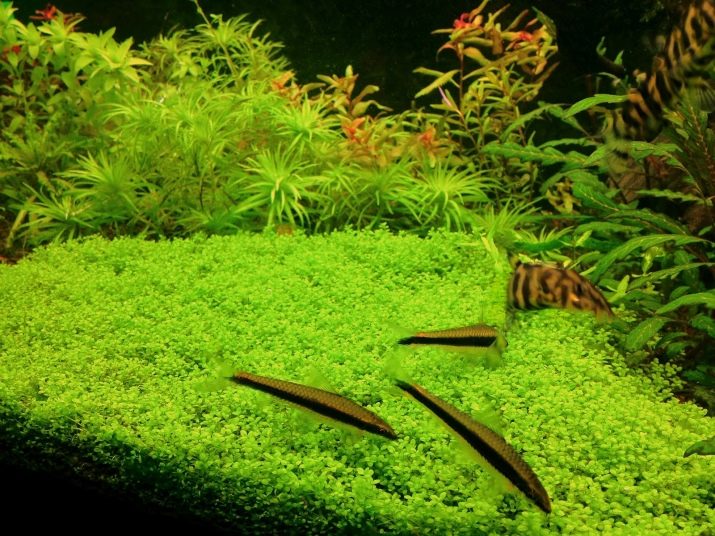
Compatibility with other inhabitants
Hemianthus cube is a family plant, as it thrives on its own kind, namely miniature thin-stemmed plants with several leaves. Together, these representatives of the flora are able to form an underwater lawn in the aquarium.
Callitrichoides is not suitable for benthic fish such as ancistrus, corridors, other shellfish, locaria catfish.
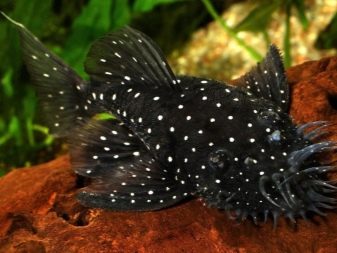
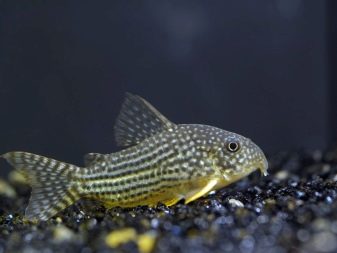
The plant can be harmed by helena snails and melania. The grass can die from the neighborhood with a black beard, thread and colekhet.
The best option for fish that live in the water column with this plant are pecilia, neon families. Amano shrimps, crystals of black and red colors, cherries perfectly coexist on a carpet of hemiantus cuba.

Growing conditions
As with growing any other plant, Hemianthus Cuba requires special conditions. The latter must comply with certain standards, deviation from which can lead to the death of the grass.
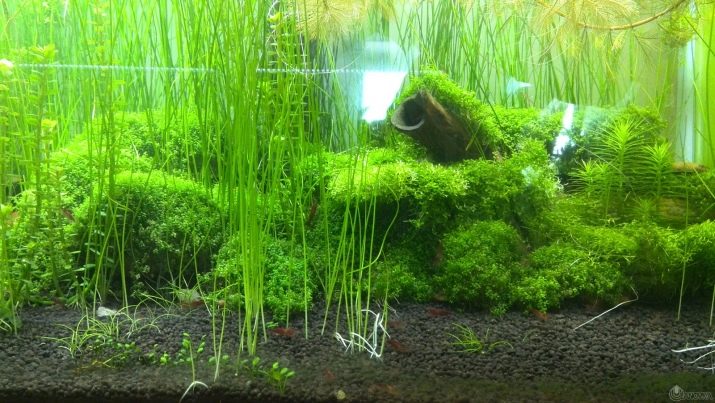
Water
The optimal variant of the environment for this representative of the flora is running water. In this case, a prerequisite is filtration of the liquid; for this purpose, a filter should be installed in the aquarium. With poor filtration, vegetation can die.
Since hemiantus is a thermophilic herb, the water temperature in the aquarium should be between 23 and 28 degrees above zero. The acidity must be at least 7.5 units.
With high acidity of the water in the aquarium, the foliage of the Hemianthus cube begins to collapse. Fluid change should be done every 7 days. In this case, you should not change all the water, replacing 1/5 of the volume will be enough.
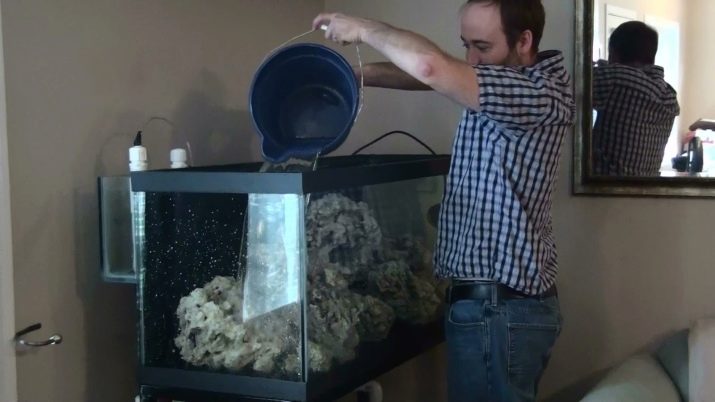
Priming
This type of aquarium vegetation prefers shallow soil, which is maximally saturated with nutrients and fertilizers. With a lack of ferrum in the water, yellowing of the leaves occurs, as well as a slowdown in the growth of the grass in general.
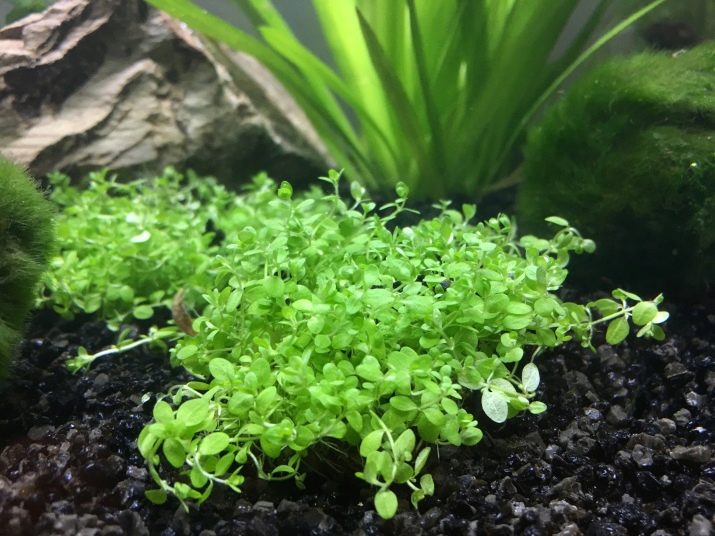
Lighting
Hemianthus cube is undemanding to the amount of light. In order for the green rug to be thicker and brighter, the lighting should be brightened. However, we must not forget that this indicator should change gradually. If the plant grows slowly, and the stem stretches upward, then it does not have enough light.
If carbon dioxide is added to the water, then the gas bubbles settle on the sheet plates.
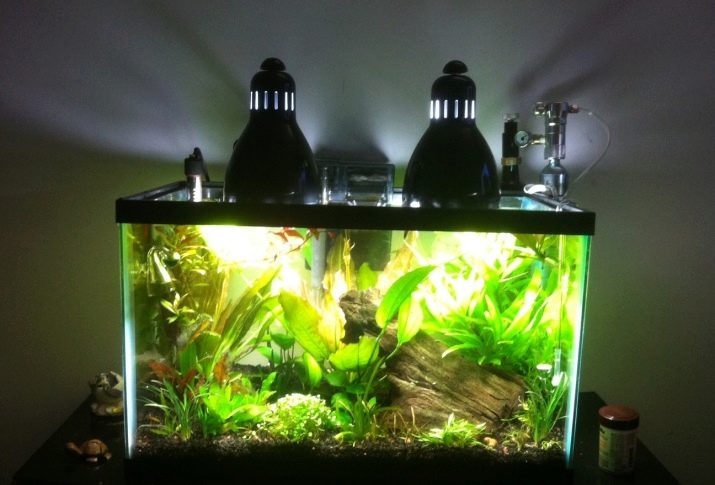
Planting and breeding
The secret of success in growing callitrichoides cuba is considered to be its correct planting and care, which will stimulate growth. In favorable conditions, this aquatic inhabitant is able to multiply rapidly, reclaiming new areas in the aquarium. The Hemianthus mat that the aquarist plans to plant needs to be divided into parts. If there is a too long root system, it is required to shorten it to 5 centimeters.
The grass is planted both in groups and individually.
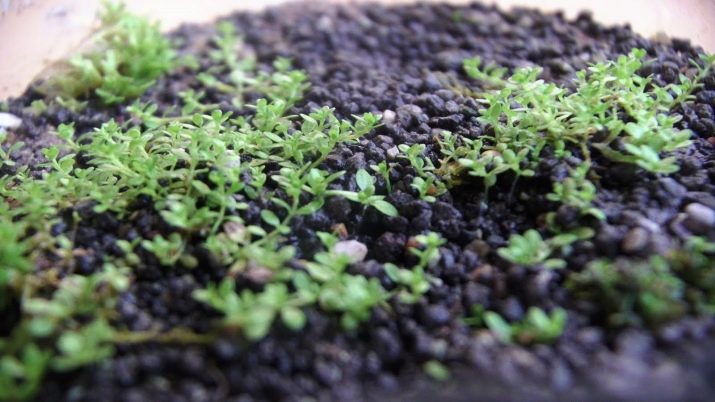
If each root is planted separately, then you will need:
- use thin tweezers in work;
- bury Hemianthus in the soil in a checkerboard pattern;
- the distance between the shoots should be at least 1 centimeter.
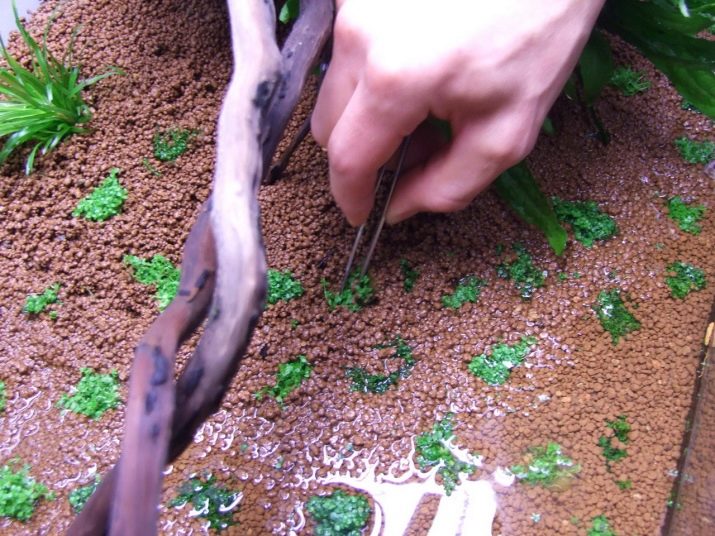
When planting in groups, it is worth following the following steps:
- divide the green rug into parts;
- place each of the shares in a well prepared in advance;
- sprinkle the grass with a substrate;
- not to break the distance between groups of Hemantus of 2 centimeters.
In order to avoid the situation when the grass floats to the water surface, it is deepened into the soil, leaving only leaves outside.
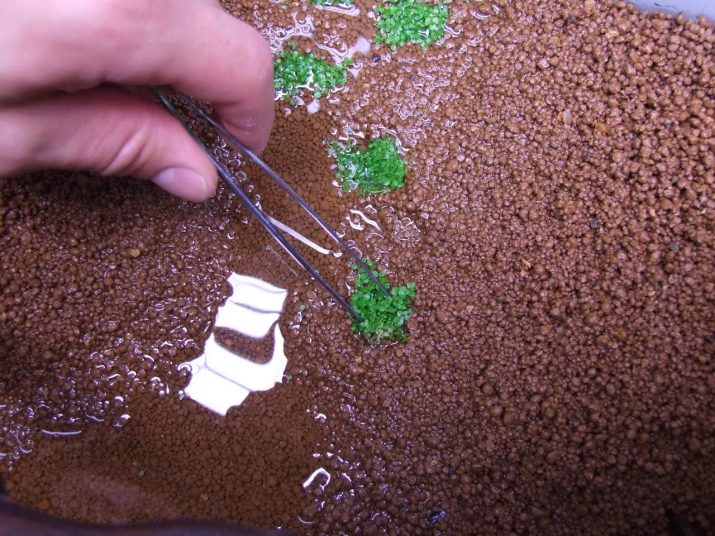
How to care?
One of the most important measures for caring for a Hemianthus cube is feeding. If the aquarium contains a lot of fish, then their secretions have a beneficial effect on the growth of the grass.After 7 days have passed since planting this aquarium plant, it is worth feeding it with fertilizer based on a ferrum. If you ignore this event or irregular feeding, you will notice that the leaves of callitrichoides have turned yellow.
When there is too much organic matter and iron in the water, the grass can darken and grind.
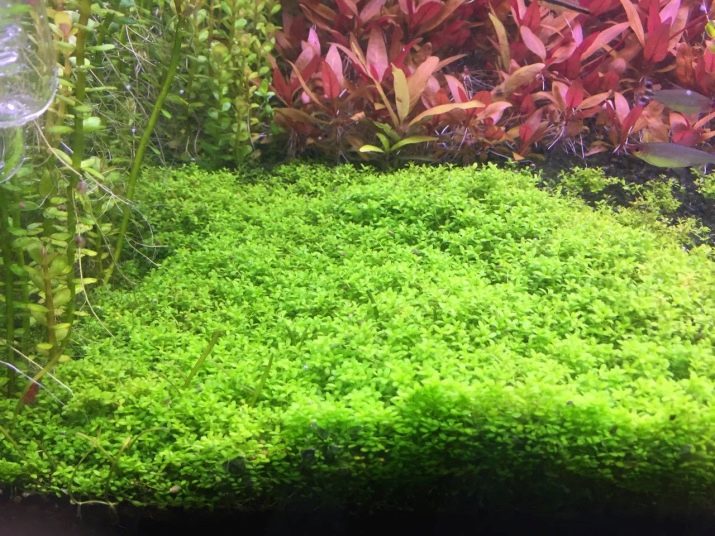
Too much iron can cause it to grow slowly or stop altogether. If the above phenomena are noticed, then it is worth stopping feeding Hemianthus.
This representative of the flora tolerates a haircut, which makes it denser and thicker. During this procedure, it is required to cut off those shoots that have grown in the form of a second tier. Also, do not forget about cutting nearby fast-growing plants, which displace or shade the cube. In the absence of a haircut or its irregular implementation, the underlay may become covered with dark spots or rot. To save the grass, it is necessary to eliminate the part of the carpet that has deteriorated, as well as to replace the rotten areas with healthy ones.
According to experienced aquarists, trimming a 0.25 m2 Hemianthus cube can take about an hour. The formation of an aquarium lawn is necessary when, with a lack of light, the stems have become very elongated. After removing the tops, the stem of the callitrichoides is exposed, and small processes stick out in different directions.
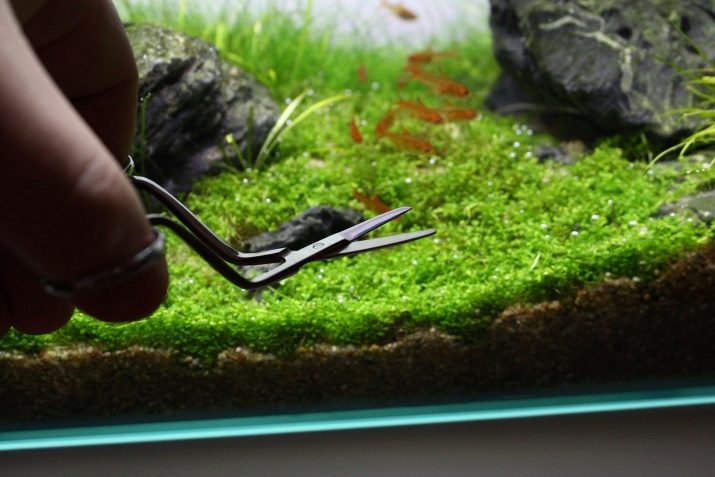
After formation, the plant does not look aesthetically pleasing, but if this is not done, then the rug, which reaches a height of more than 5 centimeters, begins to rot, and its cap floats to the surface.
In order for the plant to not float to the water surface in the first days after planting, it is worth fixing it with fishing line or nylon mesh. After about 14 days, the grass will take root and the mesh can be easily removed.
Many diseases of Hemianthus cube are associated with a lack of trace elements in water, which is vital for him. With regular and proper feeding of the aquarium plant, it will not have any ailments. Some danger may arise from other inhabitants of the artificial ecosystem. The presence of a black beard that has settled on the walls of the tank can inhibit the life of the grass.
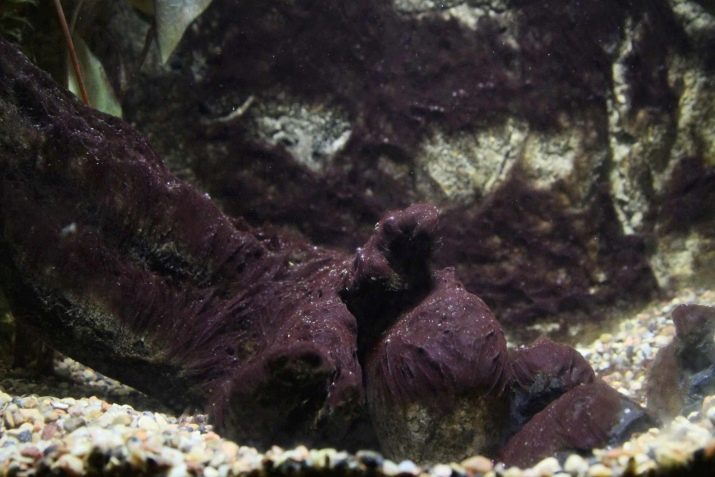
As a preventive measure, it is worth buying aquarium fish and plants only from reliable and trusted sellers.
You can help the algae by scrubbing the aquarium with a stiff brush and replacing a third of the water in the tank twice a week. Taking good care of the cube hemianthus is a guarantee of good growth and an attractive appearance of the plant. This aquarium vegetation is considered a real find, as its decorative properties are at their best. Planting callitrichoides in a home aquarium is an opportunity to create a beautiful design in an artificial reservoir that will be very similar to the natural one.
See below for errors when growing a Hemantus cube.








